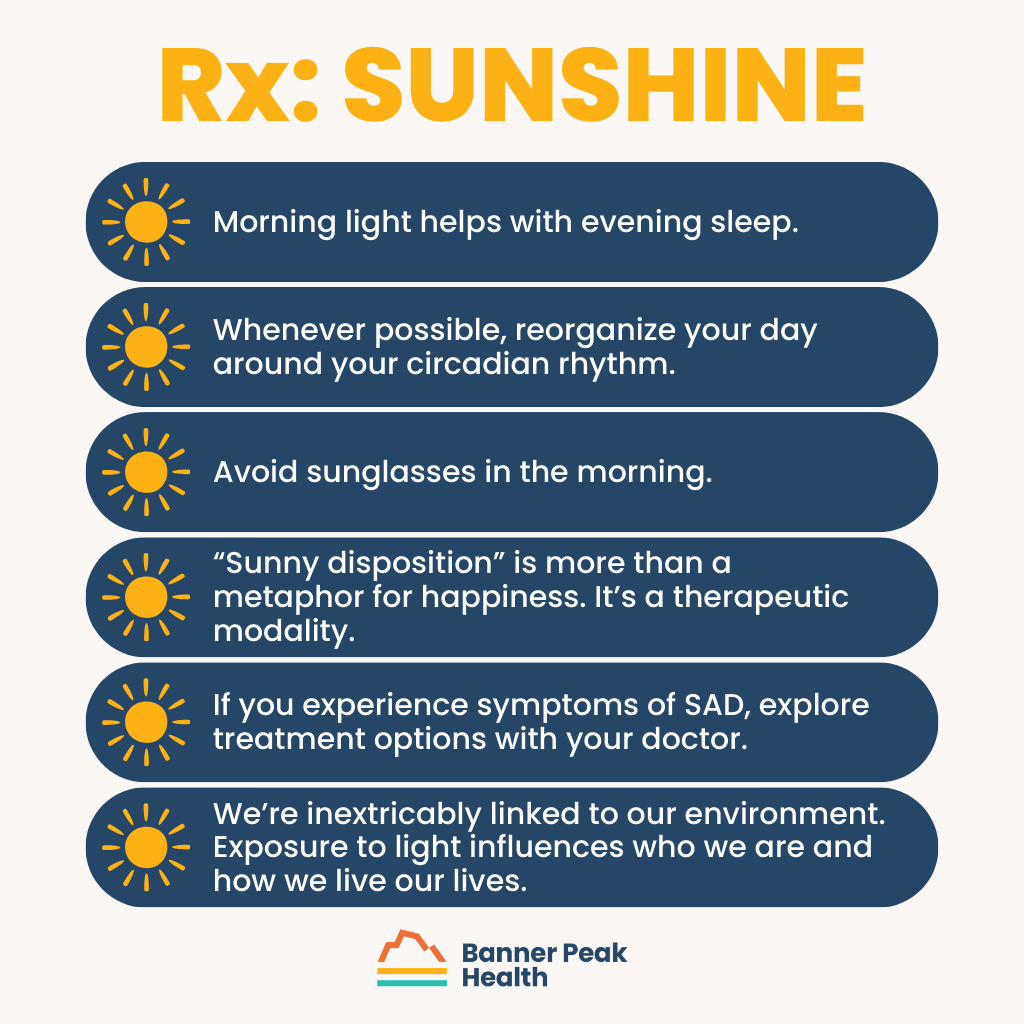Throughout history, our species has modified our environment to meet our needs, from the advent of fire to the invention of the lightbulb. The converse has always fascinated me — how the environment impacts us.
Today, I’ll discuss the connection between light, health, and wellness.
Light and Our Biology
Every cell in our bodies is “on the clock.” Our biology synchronizes with nature — our cells inside and the daylight cycle outside.
In 2017, three scientists won the Nobel Prize in Physiology for delineating the mechanisms of our internal clocks. Our eyes contain specific receptors that have evolved to sense light not for vision but to send a signal to the suprachiasmatic nucleus of the brain, which is the master clock of our body. It then synchronizes internal clocks, which exist in practically every cell in our body. When and how light reaches our eyes has profound effects on our biology and emotions.
I recently reviewed data from the Nurses’ Health Study, which examined night owls’ and morning sparrows’ risks of diabetes. Night owls are individuals with a circadian rhythm longer than 24 hours (they stay awake later and have difficulty waking up in the morning). Morning sparrows are the opposite.
According to this study, night owls have a much higher risk of developing diabetes than morning sparrows, illustrating the dangers of living life out of synchrony with your circadian rhythm. This is just one of the potentially dangerous health outcomes that can occur when night owls must wake up early for school or work.
The pandemic, with its remote work and school options, created a vast experiment by allowing people to live in accordance with their own circadian rhythms. I’m excited to follow new studies from this period demonstrating the positive impact of this flexibility on health outcomes.
Teenagers suffer greatly from being forced to time their lives out of sync with their circadian rhythms. Among the many hormonal changes that occur during adolescence, this group’s circadian rhythms lengthen, leading teenagers to become night owls. However, schools start early, which sets students up for failure.
Medical literature shows that starting school 30–60 minutes later results in improved academic and athletic performance as well as behavioral and emotional well-being.
Connecting Light, Health, and Wellness
Insomnia has many causes. One common cause is circadian rhythm asynchrony. Modern society has led us to miss the timing cues from the sun. We don’t get its wake-up call in the morning, often not seeing any early morning sunshine. We bathe our eyes in artificial light well after the sun has set, reducing any signals for our body to prepare for sleep.
To return to a more natural relationship with light, you can reset your circadian rhythm by exposing your eyes to bright natural light as early in the morning as possible. Avoid wearing sunglasses during the first two hours of the day if you’re outside.
A growing body of literature also associates circadian rhythm asynchrony with emotional disorders like depression and seasonal affective disorder (SAD), the latter of which often occurs in regions with less morning light, such as the northern latitudes in the fall and winter.
Studies have shown improvement in SAD by having people use a light box that replaces the intensity of natural sunlight (10,000 LUX) for a prescribed amount of time upon waking.
When treating patients with mood disorders, I prescribe sunshine and aerobic exercise whenever possible in the morning. It’s one of the best ways to simultaneously boost light, health, and wellness.
Today’s Takeaways
- Morning light helps with evening sleep.
- Whenever possible, reorganize your day around your circadian rhythm. (And let teenagers sleep in when possible!)
- Avoid sunglasses in the morning.
- “Sunny disposition” is more than a metaphor for happiness. It’s a therapeutic modality.
- If you experience symptoms of SAD, explore treatment options with your doctor.
We’re inextricably linked to our environment. Exposure to light influences who we are and how we live our lives.

Barry Rotman, MD
For over 30 years in medicine, Dr. Rotman has dedicated himself to excellence. With patients’ health as his top priority, he opened his own concierge medical practice in 2007 to practice medicine in a way that lets him truly serve their best interests.





